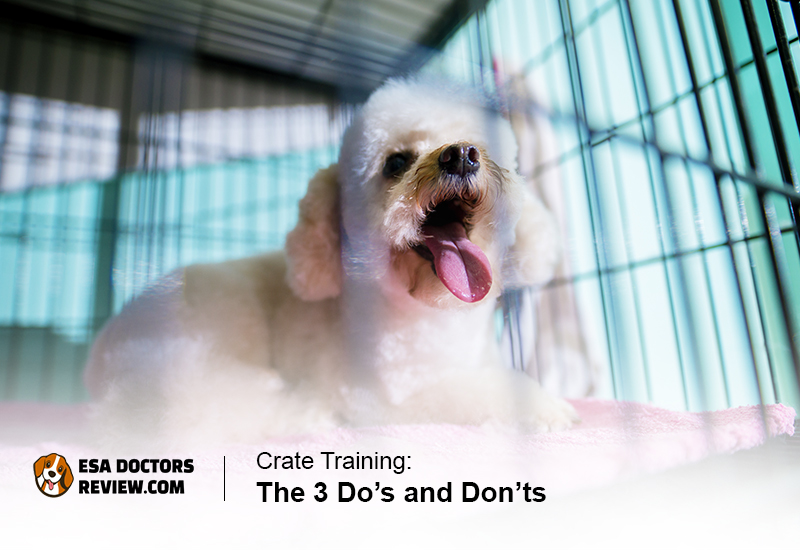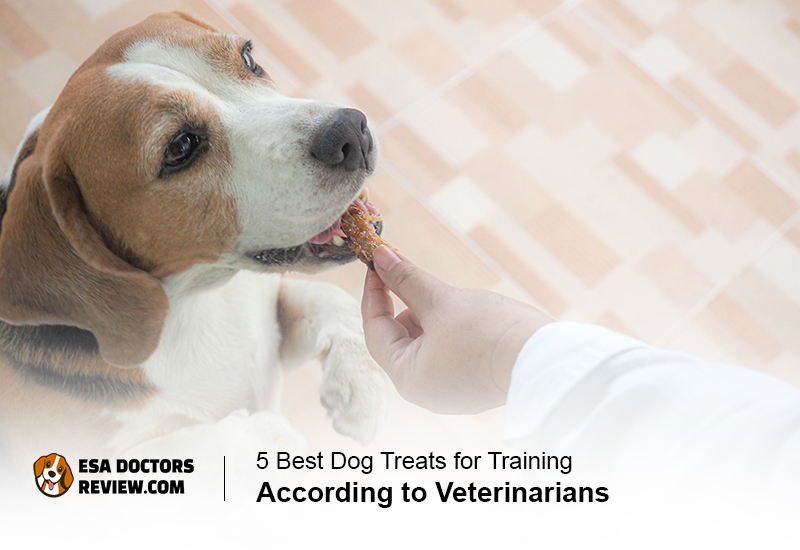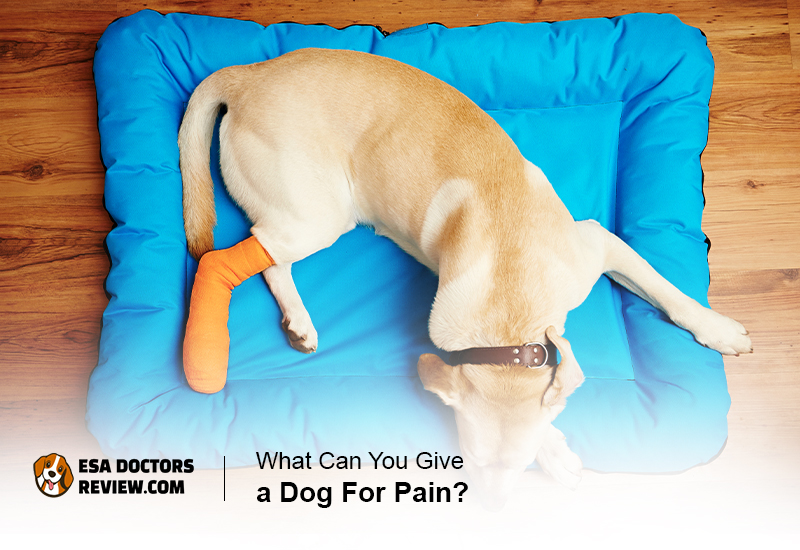The primary intention of crate training is to make your dog calmer and more disciplined. It limits access to other parts of the house while learning different rules like not chewing on furniture. Crate training is also an excellent base training when you want to transport your dog in a car.
Read reviews on one of the most popular ESA letter providers before you get one!
Crate training is not a cruel practice. You’ll have to take some necessary precautions if you want your puppy to be disciplined and not feel trapped or frustrated with the procedure. It isn’t a magical solution, and it requires a lot of patience, depending on your dog’s age, past experiences, and temperament.
Things to be cautious about during crate training.
1. Crate Training Do’s
- Puppies under six months or dogs that haven’t been house trained should be left in the crate for at most three hours at a time. The puppies haven’t yet learned to control their bladder and bowels, and leaving them for extended periods could affect them physically.
- Use a crate that’s a little bit bigger than your dog. This will ensure that your puppy has enough space to stand and walk around. However, using a crate that’s too big could allow your dog to use one end as a bathroom and retreat to the other side.
- You’ll need to crate train your dog until they can stay alone in the house without destroying any property. You could then move your dog to an enclosed space before giving them access to the entire house.
2. Crate Training Don’ts
- It would be best if you didn’t use crate training to punish your dog’s bad behavior. Sending your dog to the crate is a psychological practice known as negative reinforcement, and it will make your dog associate the crate with a negative experience.
- Eventually, your dog will learn to resent the crate, fear it and become agitated every time you send it there. Instead, use positive reinforcement by giving your puppy some treats every time they enter the crate alone.
- It would be best if you didn’t leave your dog in the crate for extended periods. Doing this could make your dog depressed, anxious, and unhealthy due to a lack of enough exercise. Your dog needs attention and human interaction.
- It would be best to look for other alternatives, such as hiring a sitter or seeking daycare services as an alternative.
- Don’t leave your dog with any bones or dangerous toys. Leaving your dog with small toys could be a hazard to its health. The dog may choke on the toy or bone if left unsupervised. Instead, you could slowly increase its supervised chew time while watching to ensure nothing dangerous happens.
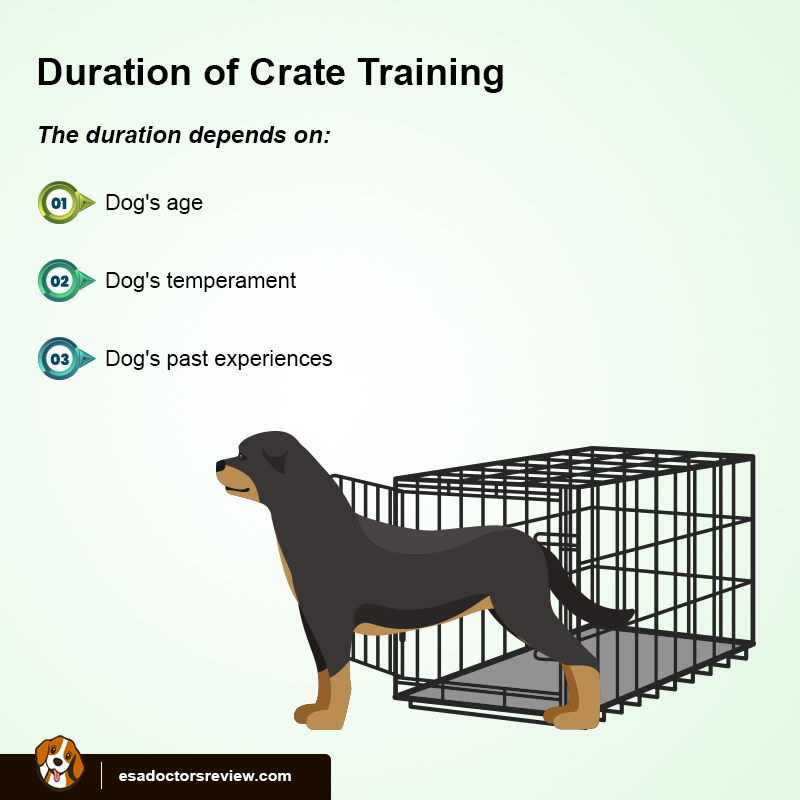
Now that we are done with these precautions, we can move on to the actual process of crate training your dog or puppy.
3. Crate Training Your Puppy
You should consider two things when crate training your puppy: you have to associate the crate with something pleasant, and you’ll also have to go through the process by taking small steps. You’ll have to be patient since the process can take days or weeks.
Step 1: Introducing Your Puppy to Their Crate
When training your dog, you’ll need to place their crate in the part of your house where the family spends the most time. Put a soft blanket in the crate and keep the door open and secure to avoid hitting and scaring the puppy.
Some dogs may be curious and start sleeping in the crate right away; however, if your dog isn’t, there are some steps you could take to encourage it.
- Bring your puppy to the crate and encourage it to enter the crate while talking in a soft, happy tone.
- You could also encourage your dog to enter the crate by dropping some treats or its favorite toy in the crate. If it doesn’t enter, don’t force it.
- Repeat these procedures patiently until your puppy decides to enter the crate by its own volition.
Step 2: Feed Your Dog in Its Crate
After you’ve introduced your dog to the crate, you’ll begin feeding your dog by placing their food near the crate. Doing this creates a pleasant association of the crate with something lovely, their meals.
If your dog readily enters the crate by this stage, you should place its meals far back in the crate. If it’s reluctant, you could set the meal as far as it’s willing to go. However, every time you feed it, you could place the meal a little further back until it’s all the way in.
Read ESA reviews, and don’t fall for fake ESA letters this time!
Once your dog is standing comfortably and eating its meal, you may close the crate’s door. However, you’ll need to open it as soon as they’re done. With each successful meal, you could extend the time you take to open the door.
Crate Training Puppy Crying
If your dog whines or cries, then you may have increased the time too quickly. You could let it out; however, if it cries or whines after closing the door for a shorter period, you’ll have to wait for it to stop whining before you open the door.
If you let it out sooner, it may learn to trick you into opening the door just by whining or crying.
Step 3: Practice With Longer Crating
If your puppy gets more comfortable and starts eating in the crate without showing any signs of anxiety or fear, you could confine them in that space for short periods while you’re in the house. At this point, you could start teaching it commands for entering the crate.
You could call the puppy over to the crate give it a treat. You could then give the puppy the command “crate” and point to the crate to encourage it to go in. After your dog enters the crate, you should praise it and give it the treat to instill positive reinforcement.
You’ll need to show your dog that by putting it in the crate, you’re not locking it away. You’ll achieve this by sitting down near the crate for ten minutes, going to the other room for another ten minutes, then coming back, sitting beside the crate, and then letting it out.
You’ll have to repeat the procedure for more extended periods, and once your dog can sit quietly for more than thirty minutes, you may leave it to sleep there at night or when going for small errands. Keep in mind that this can take several days or longer.
Click the banner below to save yourself from fake ESA letters.

Step 4: Crate Training Your Dog While at Work
Crate training a puppy while at work can be a great solution, especially if the puppy is too small to be left on its own, especially if it has not been home trained fully. Most dogs can stay in the crate for eight hours; however, puppies can only manage to stay for a shorter period.
Some specialists recommend three hours, while others recommend taking the puppy’s age in months and adding one. However, what matters is how well you know your puppy. You’ll need to monitor the puppy over a few weeks and check what its limit is.
Before you go to work, you may need to play with your puppy and take it for a potty break. After the puppy’s done, you could praise it and reward it. After you put it in its crate, you shouldn’t leave immediately or stay long before leaving.
The time limit needs to be around 5 to 20 minutes before you leave.
When crate training your dog while at work, you’ll want to leave it some safe toys that it can play with, provide it with a treat when it enters the crate, and be sure not to make the process emotional in any way.
You could have a friend pop by every 3 hours to offer it a comfort break and check on it via a pet monitor to make sure it’s okay. When you come back from work, make sure that you don’t make the return too emotional either since this could cause the puppy to feel anxious throughout the day.
Step 5: Crate Training at Night
Crate training your dog for the night is very similar to what you would do during the day. You’ll need to use your regular command and treat. Ensure the dog is as comfortable as it can be before retiring to bed.
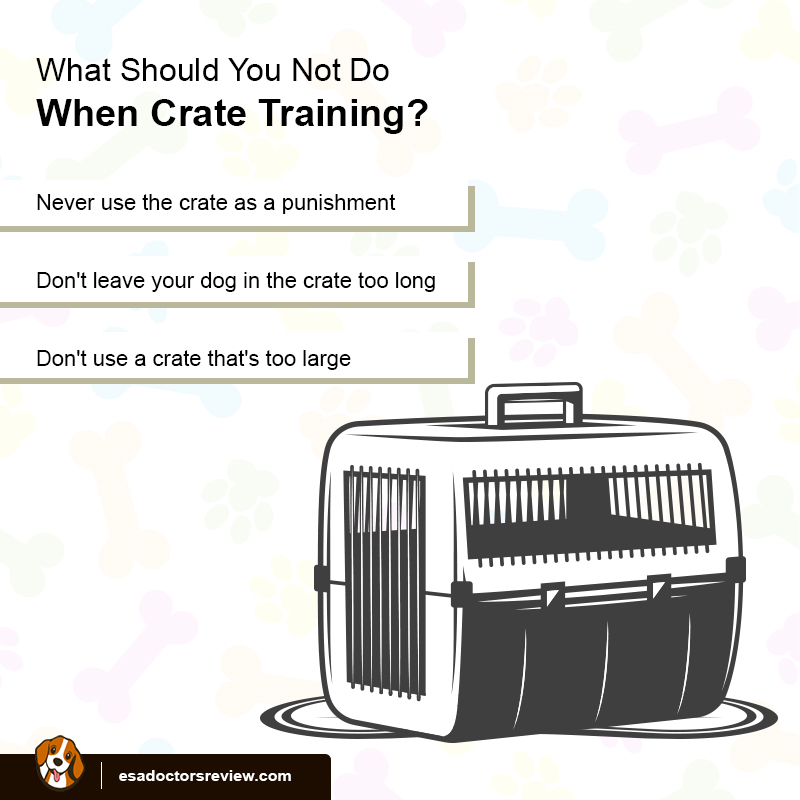
Crate Training a Puppy First Night
The primary difference between cat training a puppy and an older dog is that you may need to place the crate in your bedroom to hear when the puppy is whining about being taken out to relieve itself during the night.
You may need to redo this process for three weeks until the puppy is comfortable enough before you start moving it to your preferred location.
If you have an older dog, placing it in your bedroom helps them avoid associating the crate with social isolation. You could start moving the crate to your desired location gradually as your dog starts getting more comfortable.
Keep in mind that the more time you spend with your dog, the stronger your bond will be. If you are at work, letting your dog sleep near you could help make them friendlier and less anxious when you leave to work the following day.
4. Potential Problems
You may encounter some potential problems while crate training, such as whining, crying, or barking. You’ll need to keep in mind some crate training basics if you encounter such issues.
Crate Training Barking and Whining
When your dog barks, cries, or whines at night when it’s in its crate, it may be because of various issues. It could be because it wants to get out of the cage to relieve itself or avoid being confined. However, if you followed the instructions listed above, their barking or whining may mean the former.
Emotional support or sham? Read the reviews and decide yourself!
If it’s an older dog, you could check to see whether it wants to be let out to relieve itself; you could use the word it associates with potty-time and observe whether the dog gets excited. If it does, you could take it out.
Be aware that yelling at the dog or pounding on their crate will only make things worse. Also, keep in mind that if the dog does not relieve itself, you could hold out opening the gate the following night if you don’t want to encourage its whining behavior.
If the problem persists, it means that you may have hurried the crate training process, and you may need to repeat the procedure.
5. Separation Anxiety
If you find yourself using the crate as a solution for separation anxiety, you must know that it won’t solve the problem. It may prevent your dog from destroying things; however, it may also turn out to be counterproductive and increase the dog’s anxiety.
Your dog could also be harmed while trying to leave the crate. To avoid this, you may need to seek the help of a professional animal-behavior specialist for desensitization and counter-conditional procedures.
6. Crate Training Benefits
Crate training helps keep your puppies safe when you are not there to supervise them. Since dogs instinctively want to keep their sleeping area clean, crate training will strengthen their bowel muscles and bladder, making cleaning the house easier for you.
For instance, a crate training boxer puppy could be useful for both of you since the puppies are high-energy breeds. Trying to live with an untrained Boxer could be quite unpleasant. If you have this breed, the trick is keeping the puppy interested in what you are teaching them.
Crate training an older dog could help it become more confident and less problematic since it may lack socialization skills.
The number of fake ESA letter providers is exploding, beware!
Conclusion
Some people may view crate training as challenging and problematic; however, most dogs are people pleasers, and crate training them almost always works. It depends on how you choose to go about it.
If you want your crate training to succeed, you’ll have to use positive reinforcement instead of negative reinforcement. If you punish the dog’s bad behavior instead of rewarding its positive behavior, you may cause your dog to become stubborn and develop a bad attitude.
ESA
Everyone’s journey is different, and some people’s journeys are more challenging than others. This is why you may find yourself in need of an Emotional Service Animal to help you cope, a pawed friend that’s by your side whenever you are, one that you can hold when you get back from work could help reduce any anxious thoughts.
ESA helps make your wishes come through with their exceptional and unique services. Click on Esadoctorsreview and get in touch with a friend, a doctor who can help you with your journey today by getting you a pawed friend.
Let’s pause here and take a moment to read honest reviews about some of the best ESA clinics? Click on the banner below.


